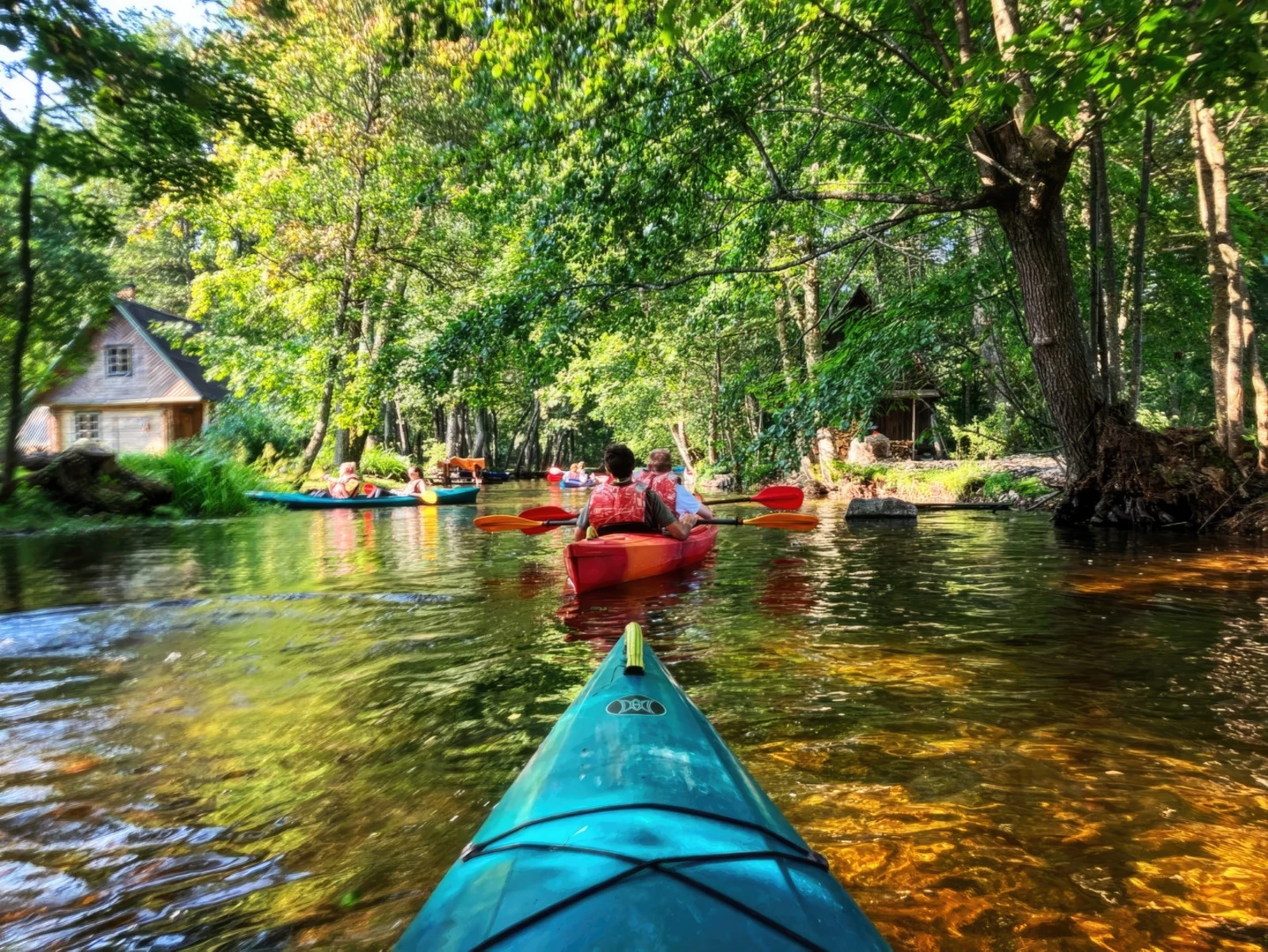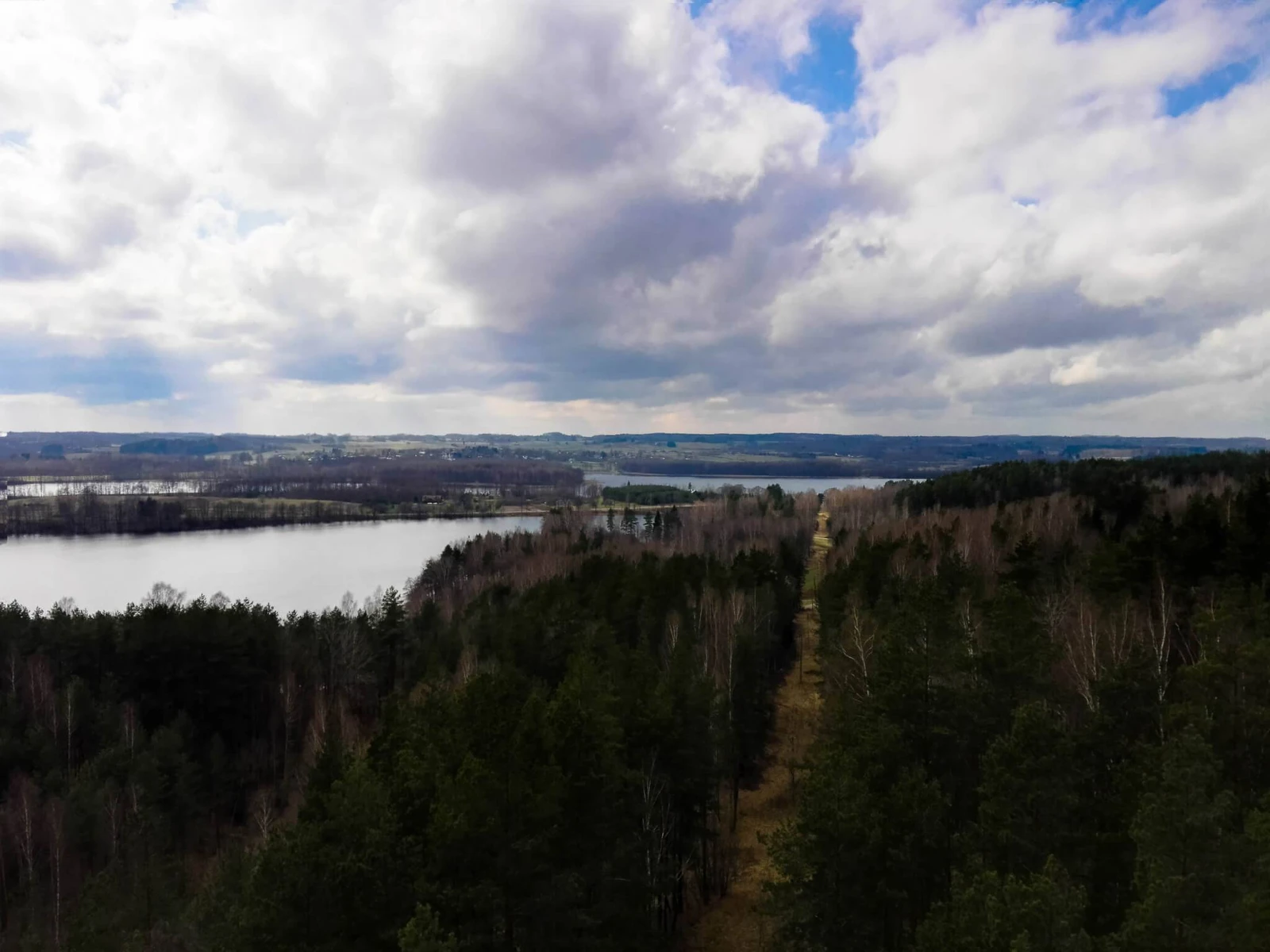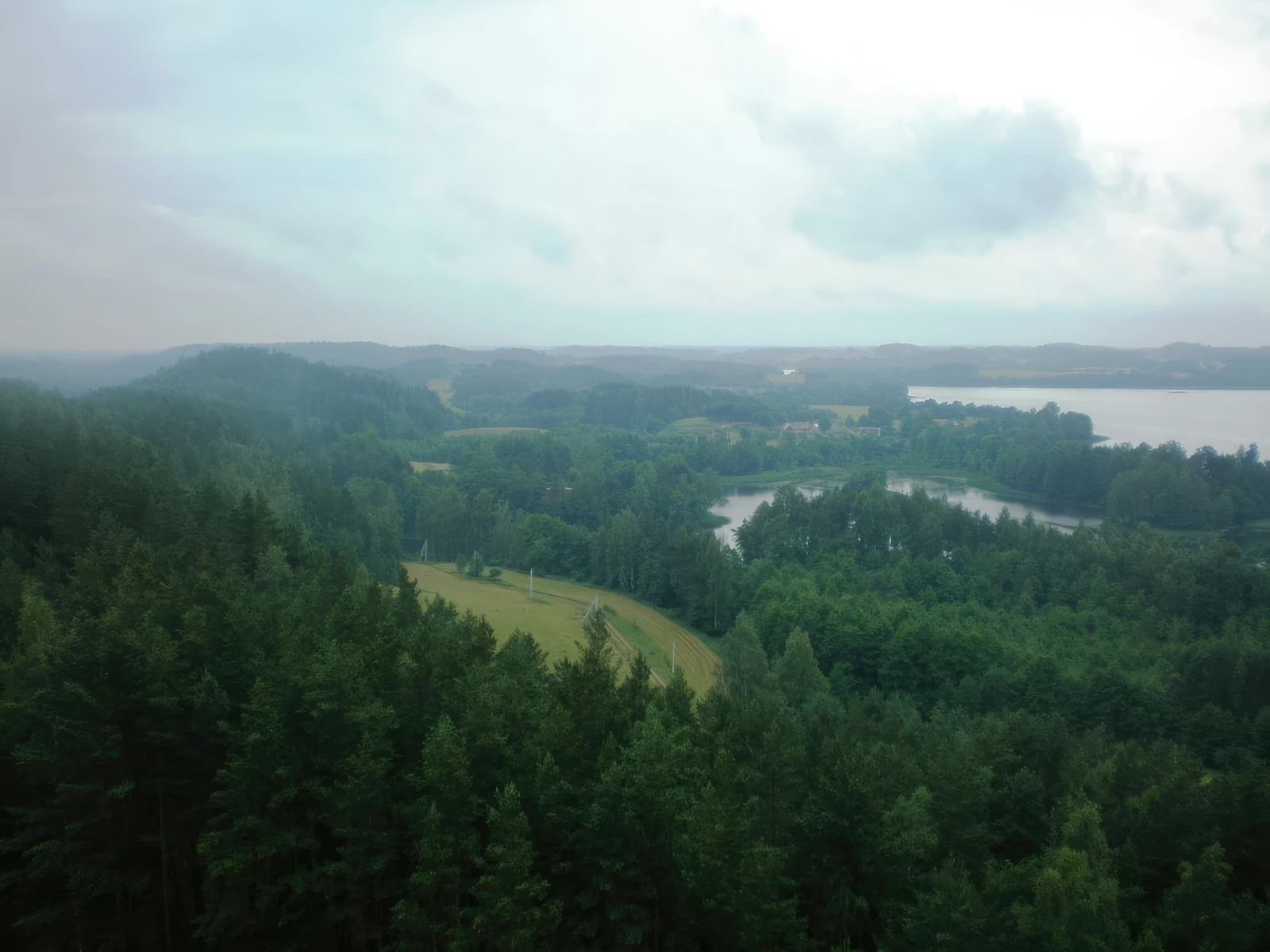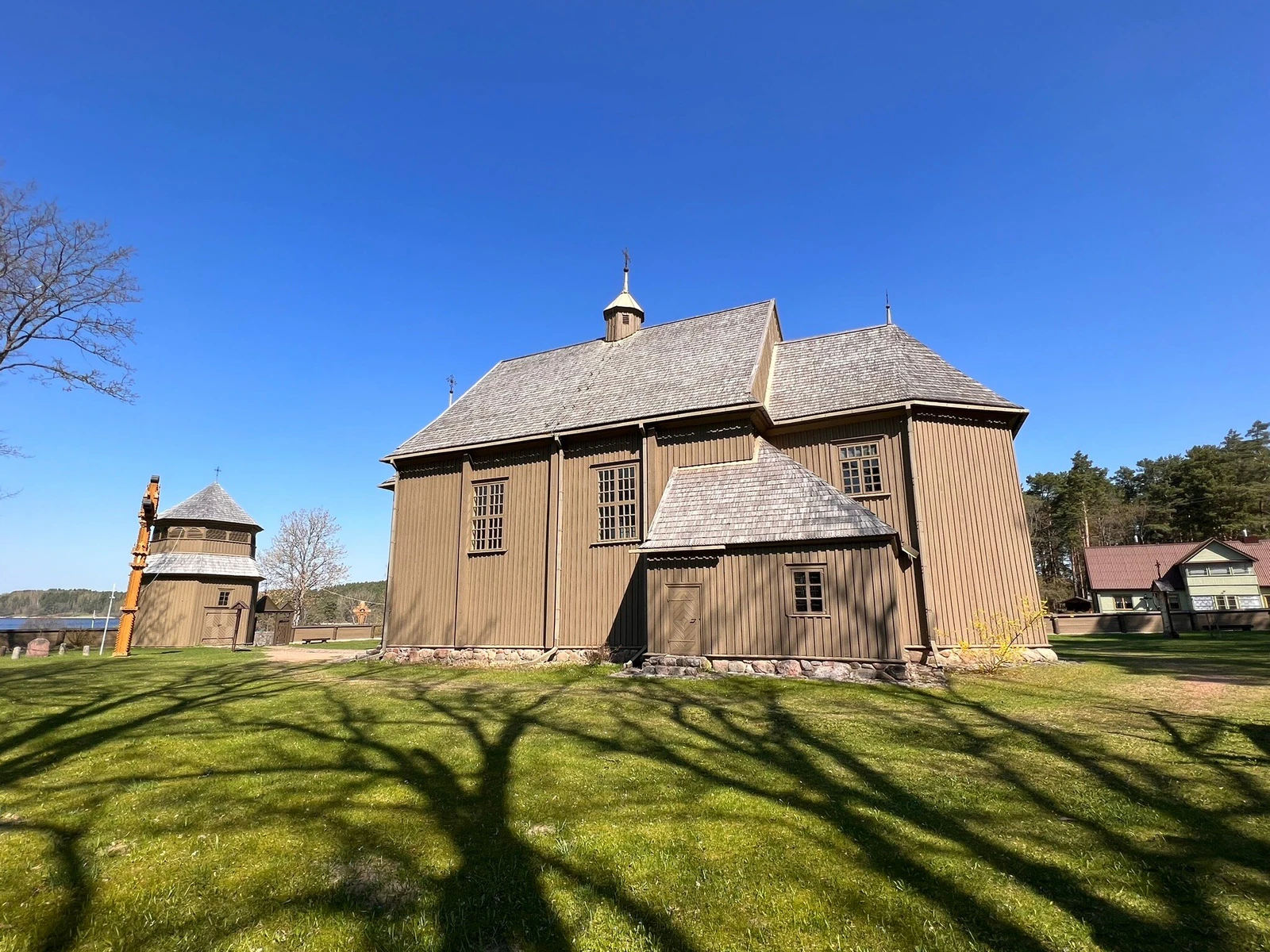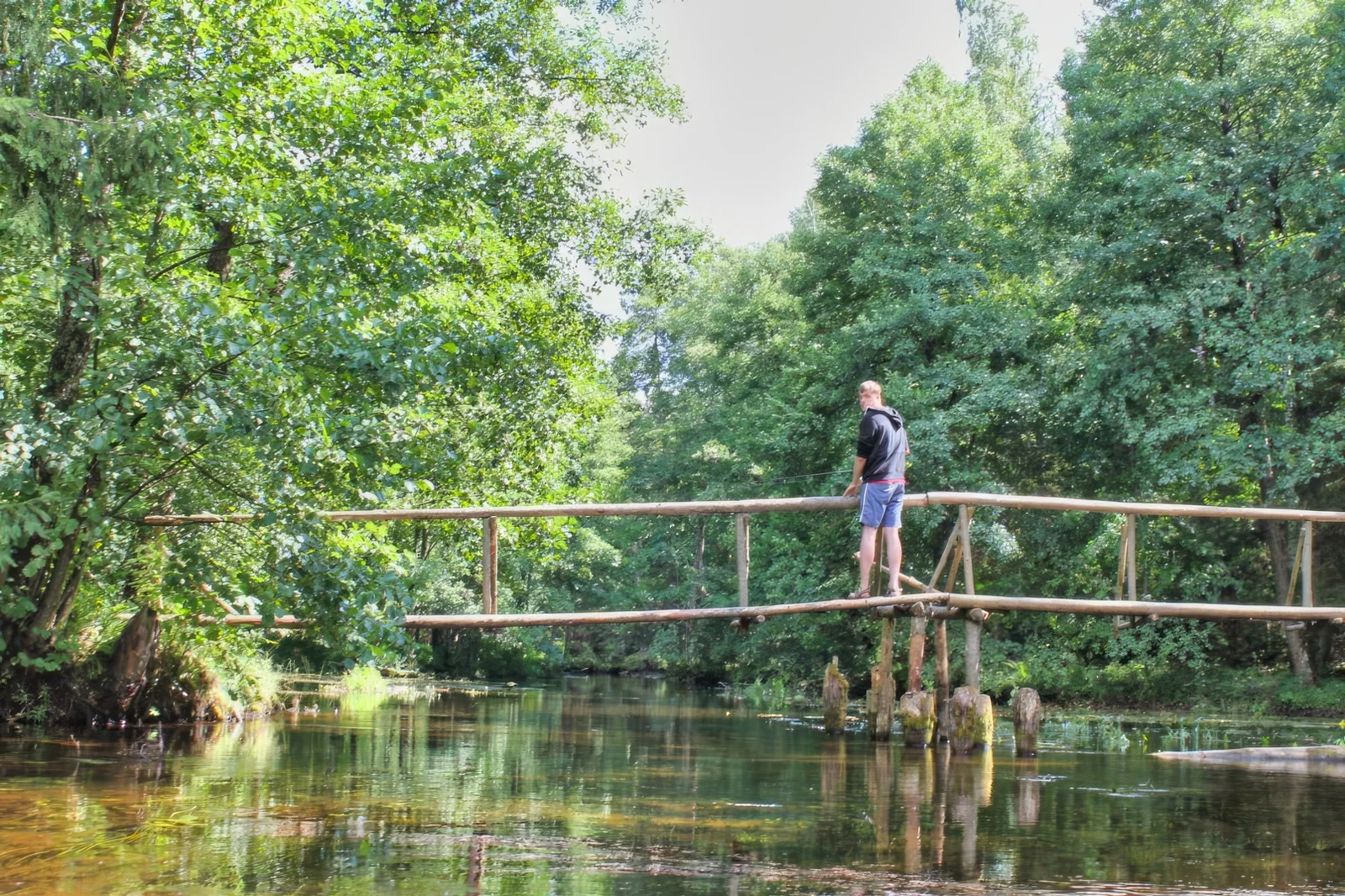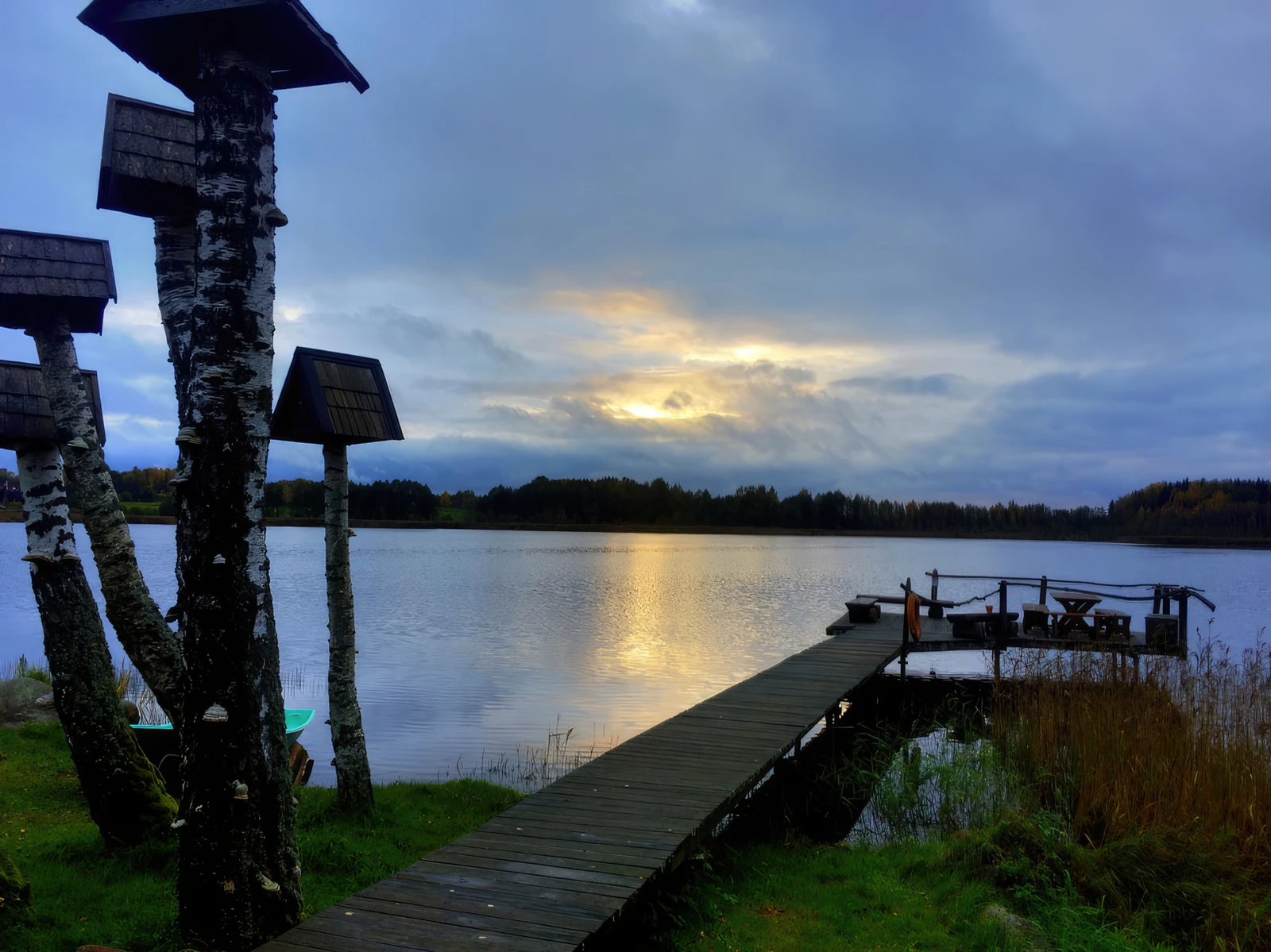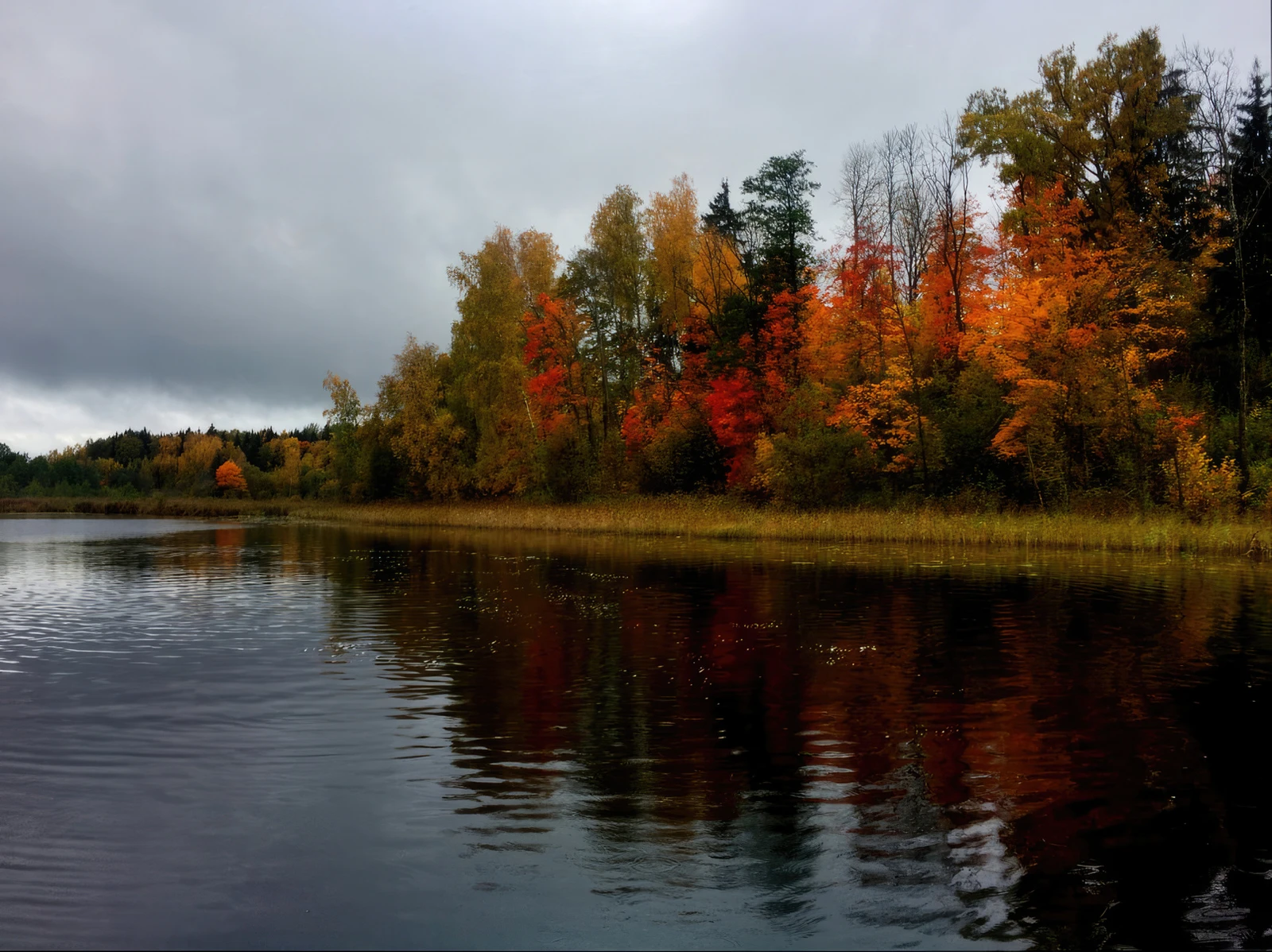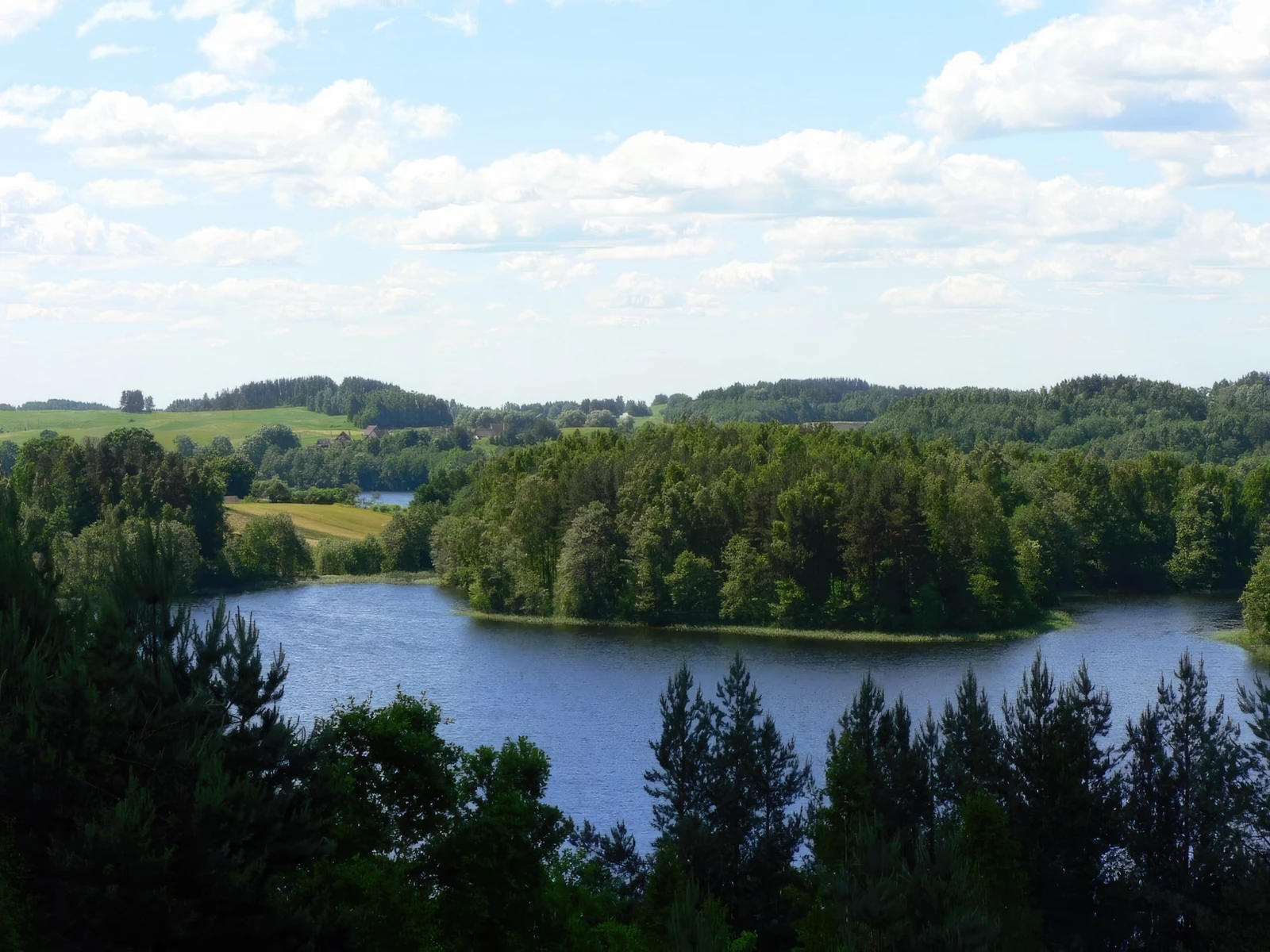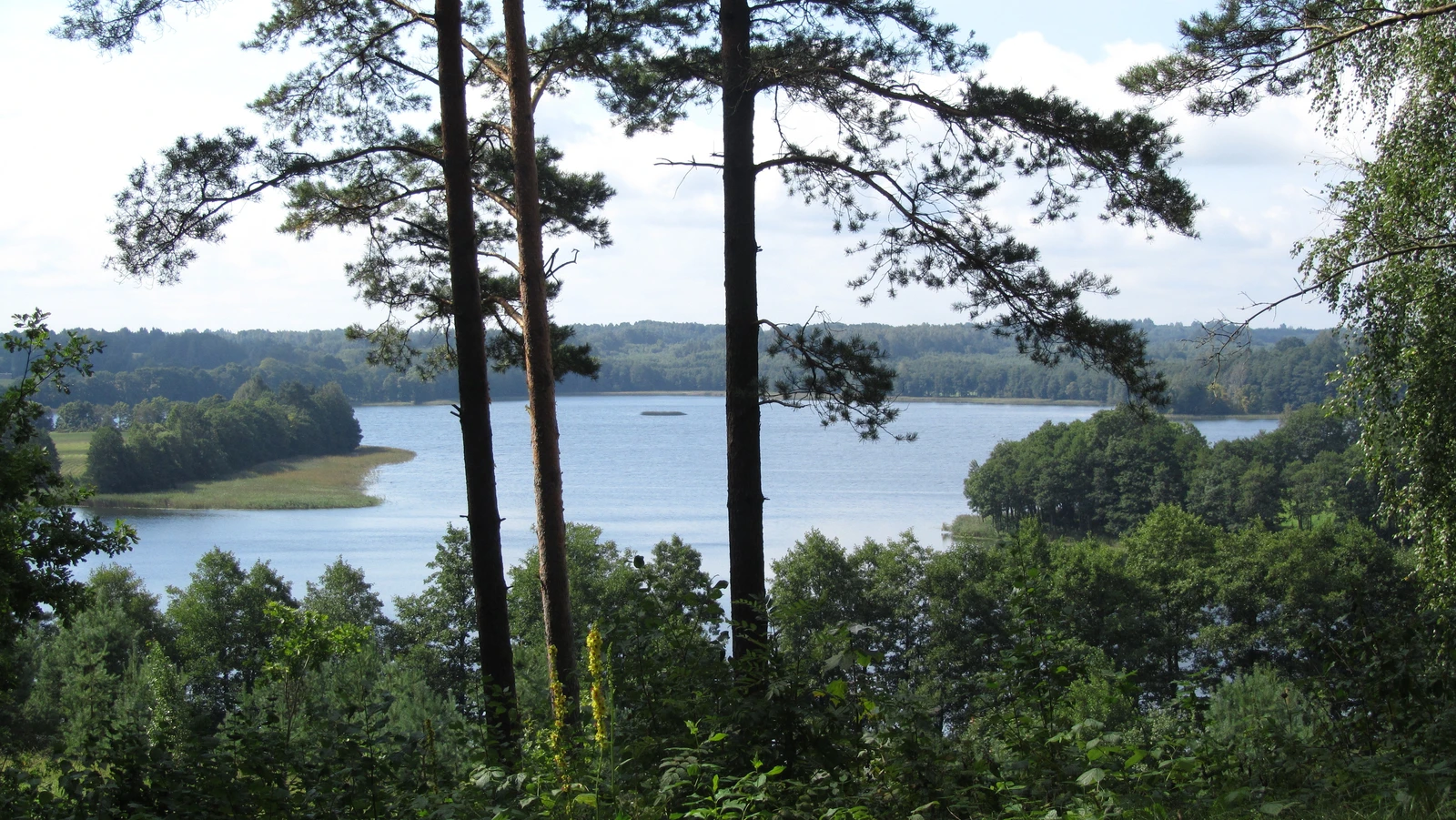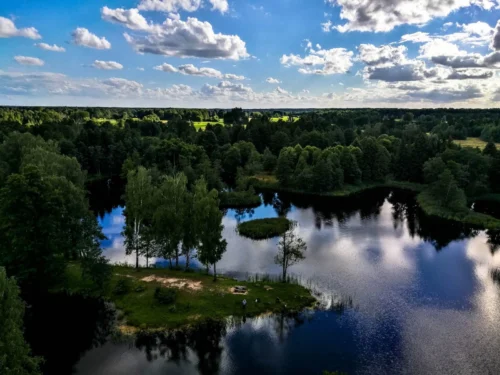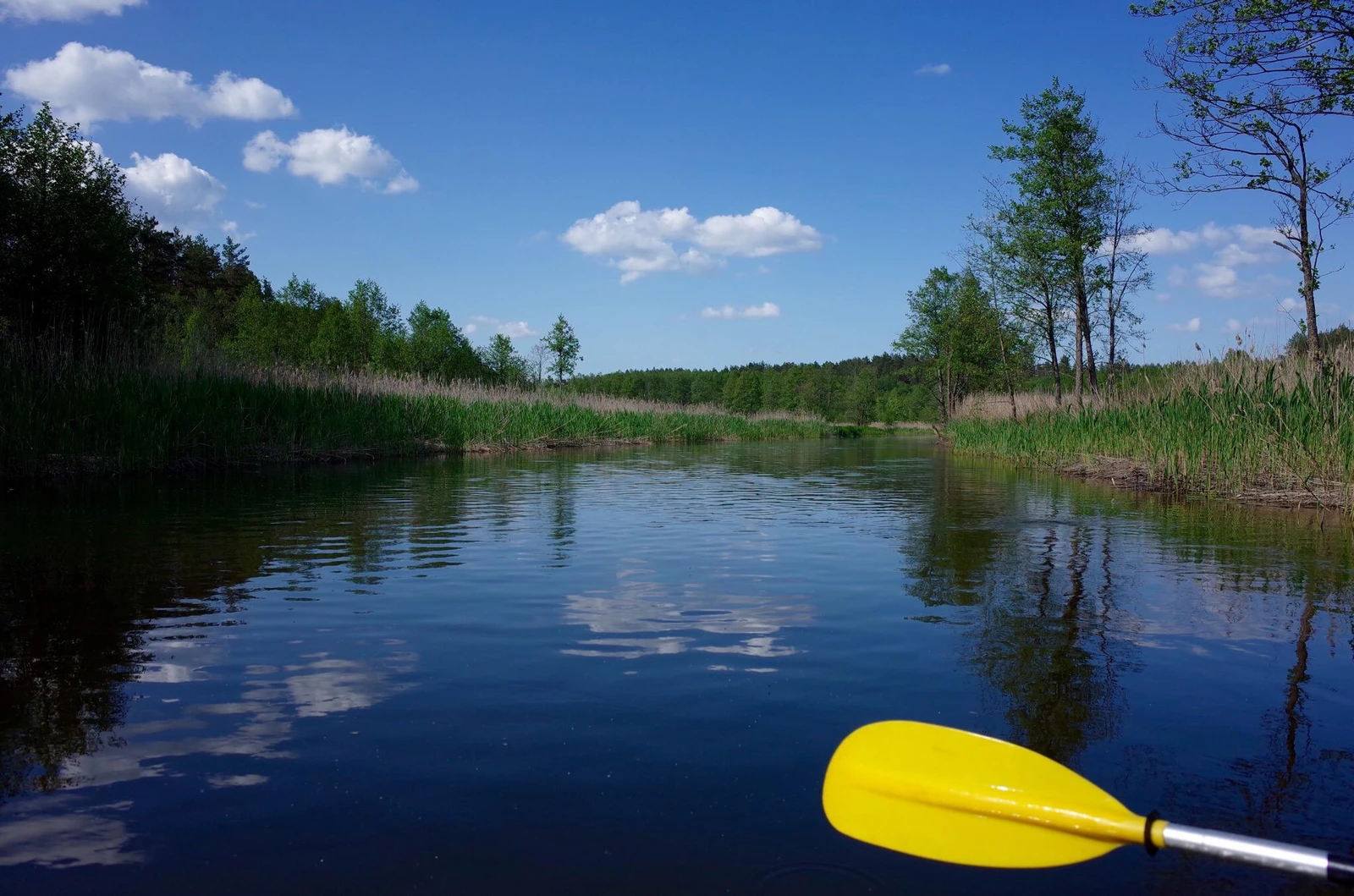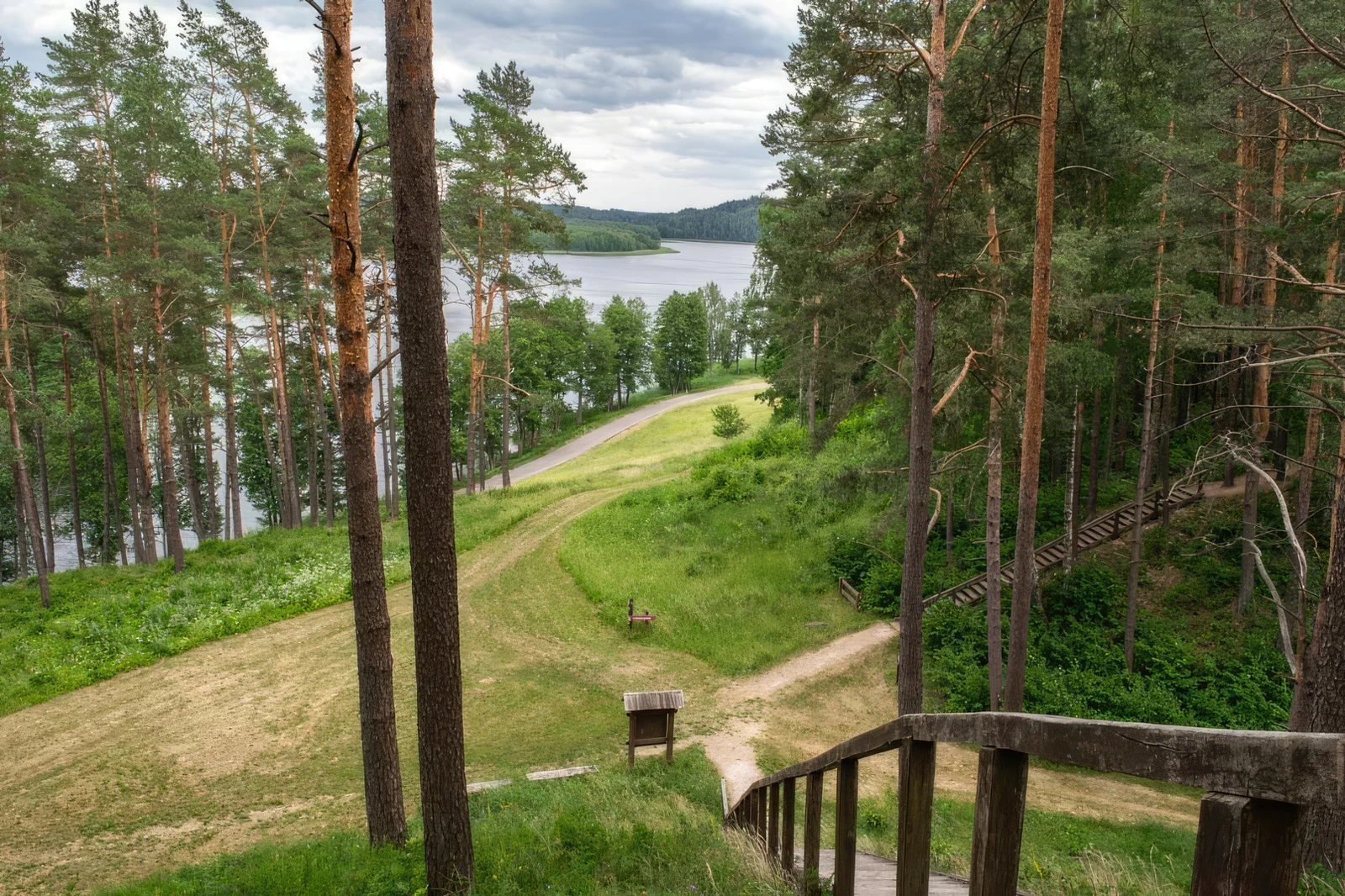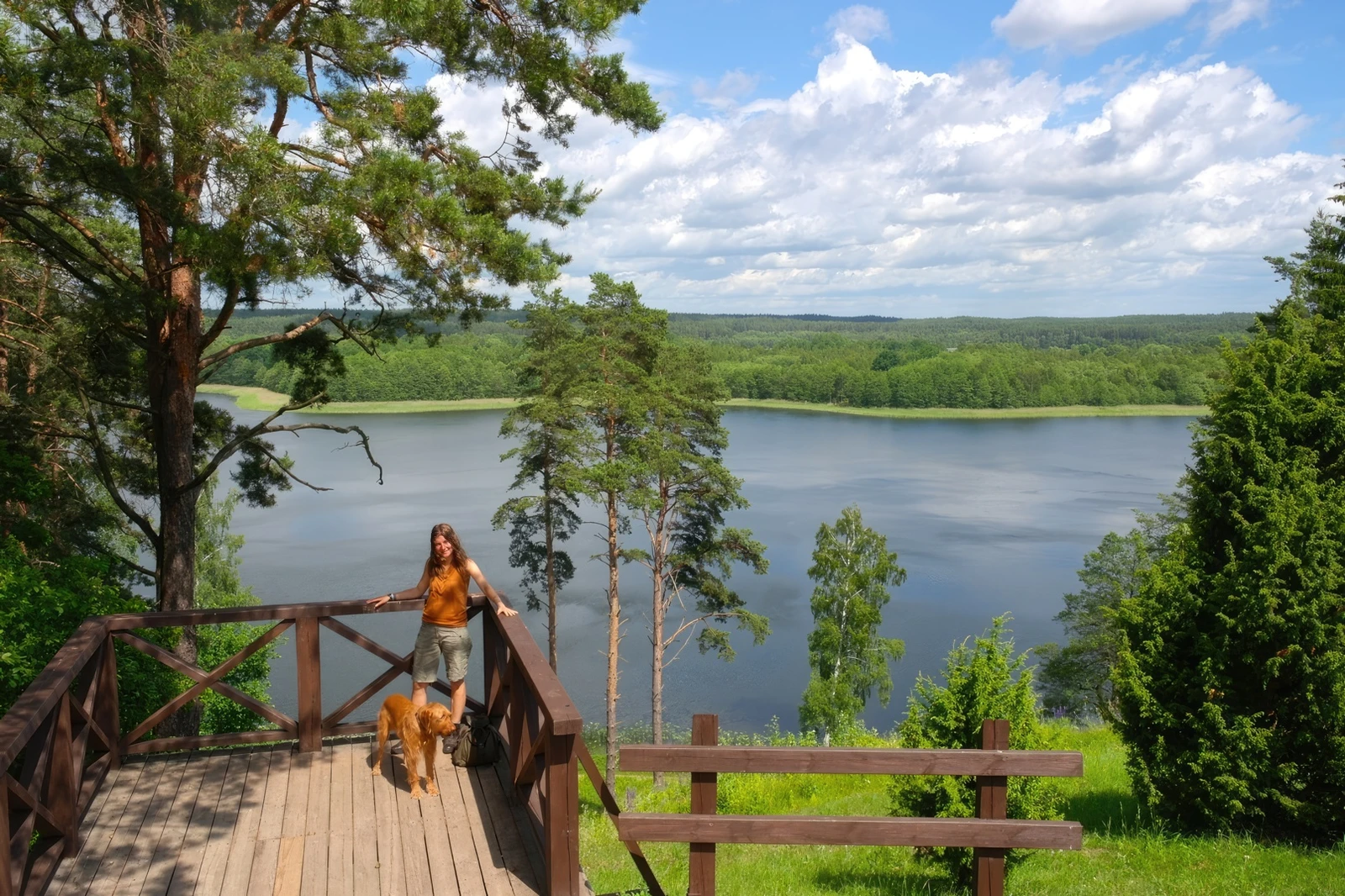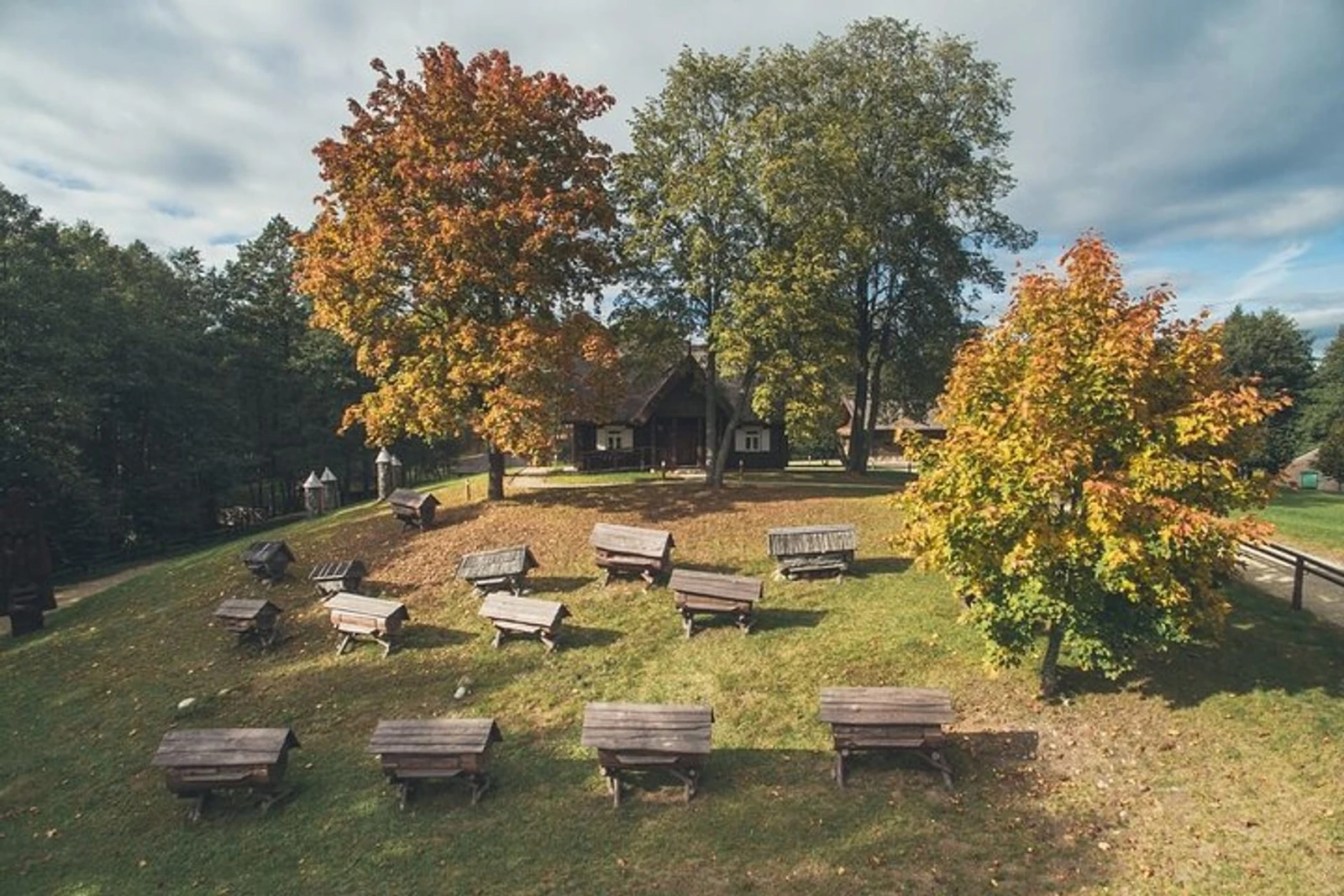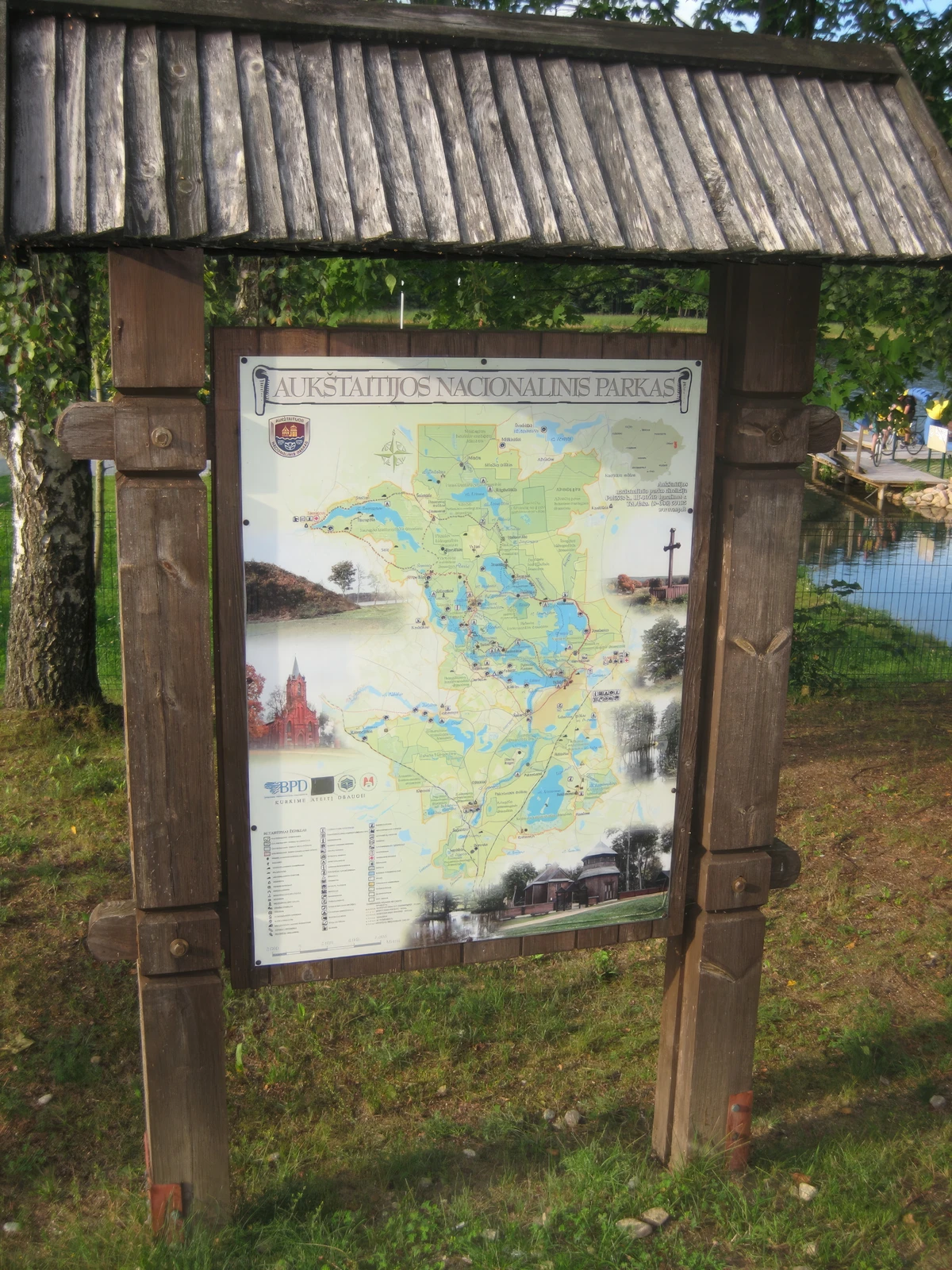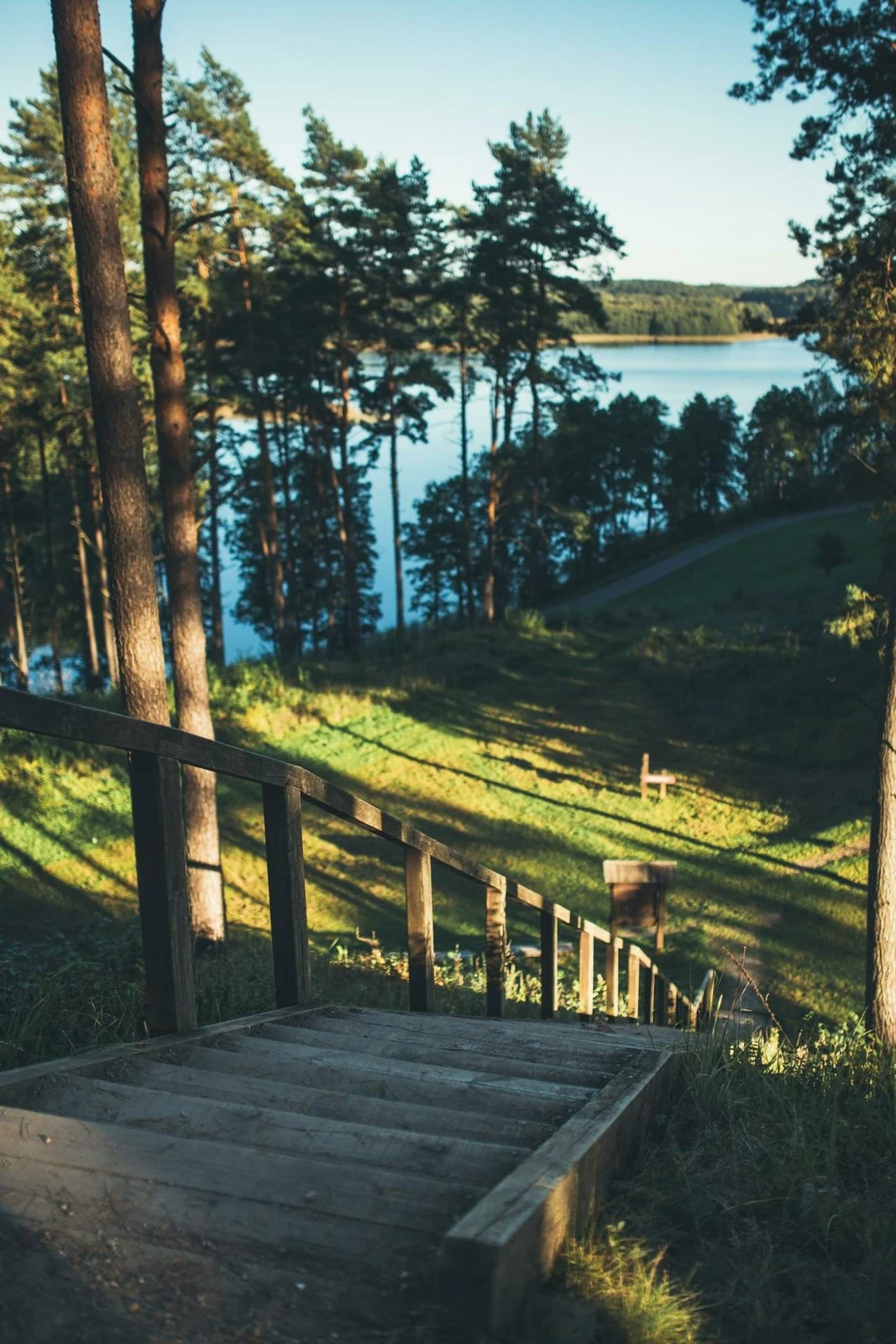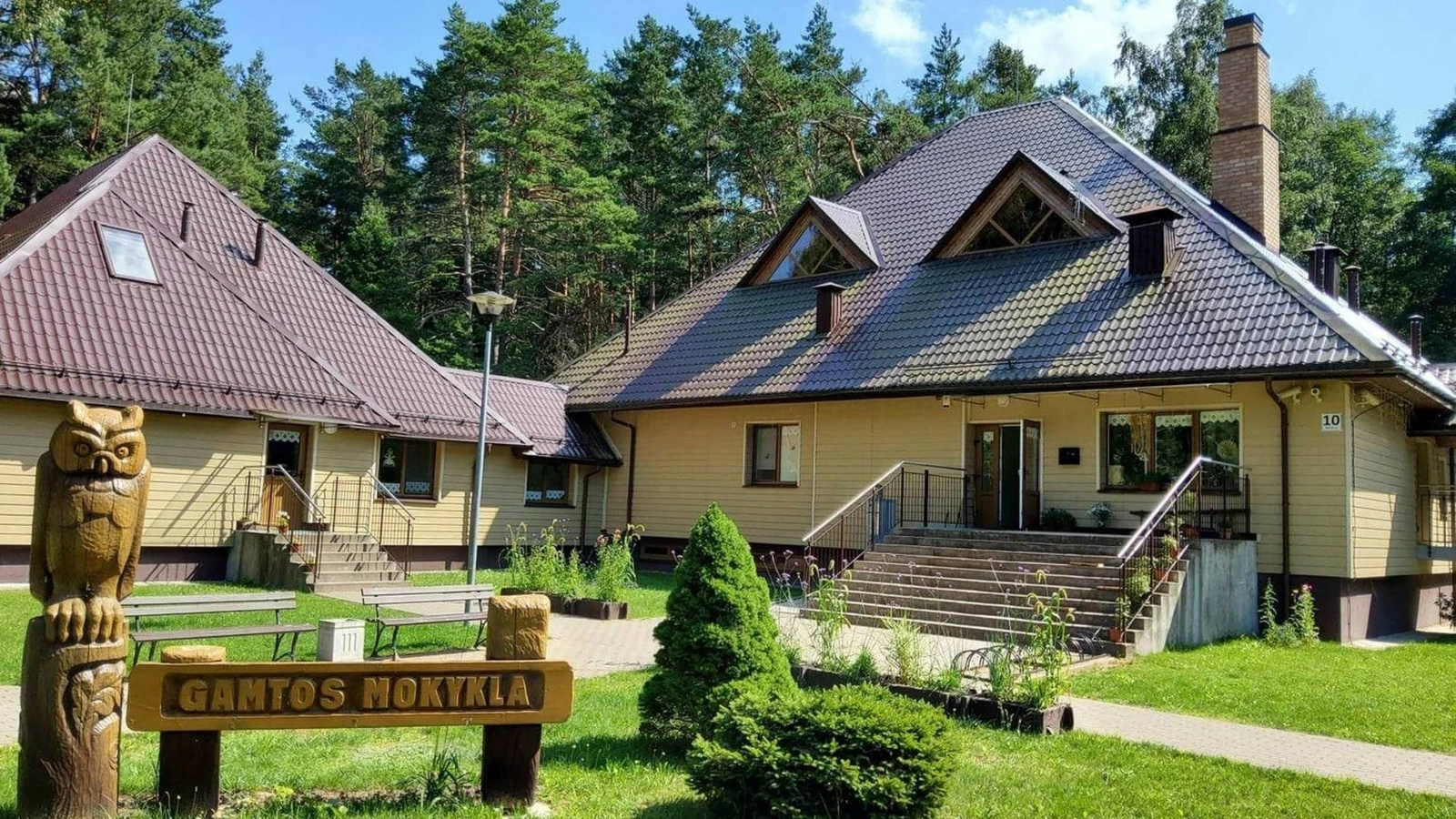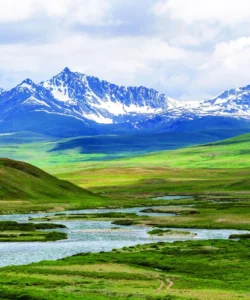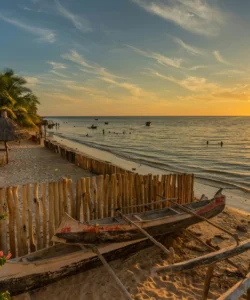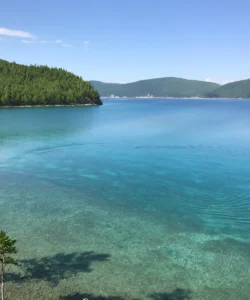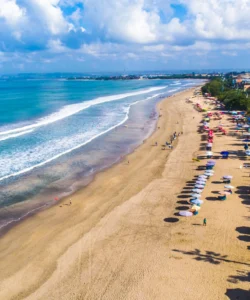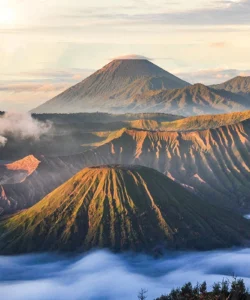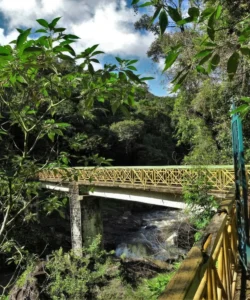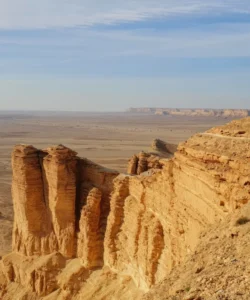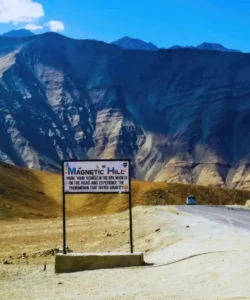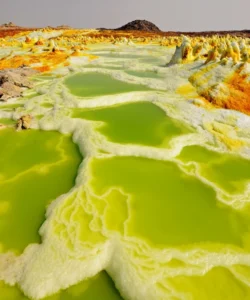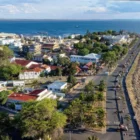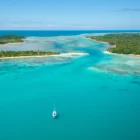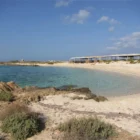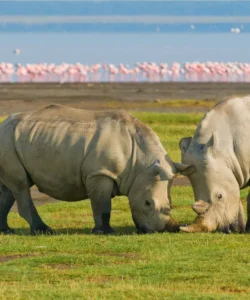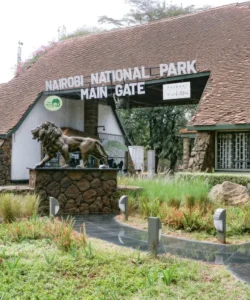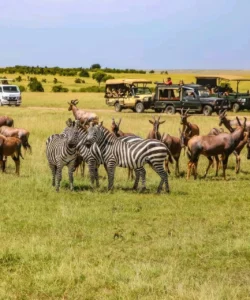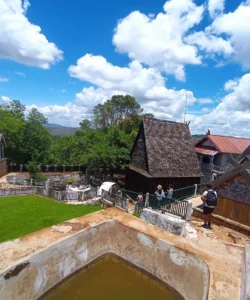Aukštaitija National Park (Aukštaitijos nacionalinis parkas) is Lithuania’s oldest national park, established in 1974. Located in the northeastern part of the country, approximately 100 km north of Vilnius, it is a captivating natural wonder renowned for its unique landscape of undulating hills, vast ancient pine forests, and an astonishing concentration of over 100 crystal-clear lakes. It’s a haven for outdoor enthusiasts and a living testament to Lithuania’s rich natural beauty and enduring ethnographic heritage.
Listen to an introduction about Aukstaitija National Park

Name: Aukštaitija National Park (Aukštaitijos nacionalinis parkas). “Aukštaitija” is one of Lithuania’s five ethnographic regions, meaning “Highland” or “Upland,” referring to its higher elevation compared to the lowlands.
Address: The park covers territory in the Ignalina, Utena, and Švenčionys district municipalities, Lithuania. The main visitor center is located in Palūšė village.
How to get there:
Reaching Aukštaitija National Park, involves a significant international journey to Europe, followed by domestic travel within Lithuania:
- From Vilnius to Aukštaitija National Park (e.g., Palūšė):
- By Bus: Buses depart from Vilnius Bus Station towards Ignalina or Palūšė. The journey to Ignalina takes approximately 1.5-2 hours. From Ignalina, local buses or taxis can take you to specific villages within the park like Palūšė. Some direct buses to Palūšė might be available in peak season.
- By Train: Trains run from Vilnius Railway Station to Ignalina. The journey takes around 1.5-2 hours. From Ignalina, local transport is needed.
- By Car: Driving from Vilnius to Aukštaitija National Park (e.g., Palūšė) takes about 1.5-2 hours (approx. 100 km northeast of Vilnius). This offers the most flexibility for exploring the park’s various sites.
- Organized Tour: Some tour operators in Vilnius offer day trips to the park, especially for kayaking or hiking.
- Within the park: The park is vast, and activities often involve driving, cycling, or kayaking between different areas and villages.
Best Time to Visit:
Aukštaitija National Park is beautiful year-round, with distinct seasonal appeals:
- Summer (Mid-June to August): Warmest weather, ideal for swimming, kayaking, canoeing, hiking, and cycling. The lakes are at their most inviting, and it’s the peak season for outdoor activities.
- Late Spring (May to early June) and Early Autumn (September to early October): Pleasant temperatures, fewer crowds, and stunning natural colors (especially autumn foliage), excellent for hiking and cycling. Mushroom hunting is popular in autumn.
- Winter (November to April): Cold and often snowy, offering a serene, quiet, and picturesque landscape, ideal for cross-country skiing or simply enjoying the tranquil beauty of frozen lakes and snow-covered forests.
Landscape and Architecture:
Aukštaitija National Park’s “architecture” is its unique blend of glacial landscapes and well-preserved ethnographic villages:
- Glacial Landscape: The park’s topography was shaped by the last Ice Age, resulting in a hilly, morainic landscape dotted with drumlins (elongated hills) and eskers (long, winding ridges of gravel and sand).
- Over 100 Lakes: The defining feature. The park is home to 126 lakes, many of which are interconnected by rivulets and streams, forming intricate tunnel valley systems.
- Lake Tauragnas: The deepest lake in Lithuania (62.5 meters / 205 feet), located within the park.
- Lake Baluošas: Unique for having a small lake on one of its many islands.
- The lakes cover approximately 15.5% of the park’s area.
- Vast Pine Forests: Over 70% of the park is covered by dense forests, primarily ancient pine stands (some over 200 years old), interspersed with mixed and deciduous woodlands. These forests are vital for the park’s biodiversity.
- Ladakalnis Hill: A famous geomorphological monument and ancient pagan holy place. From its summit, visitors can enjoy panoramic views of six different lakes, a truly iconic vista.
- Ethnographic Villages: The park is home to several well-preserved traditional ethnographic villages, showcasing Lithuanian rural architecture and way of life.
- Palūšė Village: The park’s administrative center, featuring an 18th-century wooden church (Church of St. Joseph) with a distinctive wooden belfry, which is pictured on the park’s logo and was once on the 1 Litas banknote. It is believed to be the oldest surviving wooden church in Lithuania.
- Šuminai Village: Known for its collection of old wooden architecture.
- Stripeikiai Village: Home to the unique Lithuanian Museum of Ancient Beekeeping.
- Ancient Burial Mounds and Hillforts: Scattered throughout the park are numerous archaeological monuments, including burial mounds (tumuli) dating from the 4th-12th centuries and ancient hillforts (piliakalnis), offering glimpses into the region’s prehistoric past.
- Watermills: Several historic watermills, like the Ginuciai Watermill (nearly 200 years old), are still found in the park, some with original equipment.
What makes it famous:
Aukštaitija National Park is famous for:
- “Land of Lakes”: Its exceptional abundance and interconnectedness of lakes, making it a prime destination for water tourism, particularly kayaking and canoeing.
- Oldest National Park in Lithuania: Its status as the first protected area of its kind in Lithuania (and the third in the former Soviet Union) gives it a pioneering significance.
- High Biodiversity: Despite its relatively small size, the park boasts remarkable biodiversity, containing 59% of all plant species found in Lithuania and numerous rare animals, birds, and fungi listed in Lithuania’s Red Book.
- Unique Cultural Heritage: It preserves traditional Lithuanian ethnographic villages, unique wooden architecture, ancient archaeological sites (burial mounds, hillforts), and specialized museums (like the Ancient Beekeeping Museum), offering a deep dive into local culture.
- Ladakalnis Hill Viewpoint: The iconic view of six lakes from Ladakalnis Hill is a renowned scenic highlight.
- Outdoor Activities: A paradise for hiking, cycling, kayaking, canoeing, fishing, and mushroom picking.
- Wooden Churches: The charming wooden churches, particularly in Palūšė, are notable architectural and historical gems.
Differences from some other wonders:
Aukštaitija National Park distinguishes itself from other national parks and natural wonders in several key ways:
- Extreme Lake Density and Interconnectedness: While other parks have lakes (e.g., Lake Bunyonyi in Uganda, Lake Khövsgöl in Mongolia), Aukštaitija’s unusually high concentration of over 100 lakes, many intricately interconnected by rivers and streams in tunnel valleys, creates a specific “lake district” landscape that is ideal for multi-day water-based exploration (kayaking/canoeing circuits) in a way few other parks offer.
- Integration of “Living” Ethnographic Heritage: Unlike parks that are purely natural or have isolated historical ruins, Aukštaitija seamlessly integrates numerous active ethnographic villages with well-preserved traditional wooden architecture within its boundaries. This provides a genuine, living cultural experience alongside nature, distinct from more museum-like folk villages.
- Focus on Glacial Landscape Features: The park prominently showcases geological features from the last Ice Age (moraines, drumlins, eskers, tunnel valleys) that shape its unique hilly and lake-rich topography, offering a distinct geological narrative compared to volcanic landscapes or river-carved canyons.
- “Forest of Pines” as Dominant Flora: The prevalence of vast, ancient pine forests covering over 70% of the park creates a unique visual and atmospheric character, differing from deciduous or tropical rainforests in other parks.
- Pagan-Influenced Natural Sites: The presence of ancient pagan holy places like Ladakalnis Hill imbues the natural landscape with a deeper layer of pre-Christian cultural and spiritual significance, adding a unique historical dimension.
- Balance of Nature and Accessible Culture: It strikes a perfect balance between untouched nature (strict reserves) and accessible cultural sites, allowing visitors to choose their level of immersion, from deep wilderness exploration to gentle village visits.
In essence, Aukštaitija National Park is a unique and enchanting wonder, a serene tapestry of ancient forests and shimmering lakes, offering a profound connection to Lithuania’s natural beauty, its enduring ethnographic traditions, and its deep historical roots shaped by the Ice Age.
